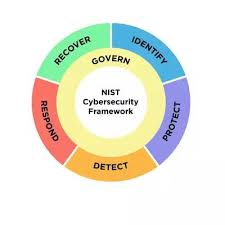In a digital landscape constantly under siege by cyber threats, the National Institute for Standards and Technology (NIST) has once again stepped up to the plate, introducing an updated and improved version of its renowned Cybersecurity Framework. First introduced almost a decade ago, this revised framework, dubbed Cybersecurity Framework 2.0, marks a significant evolution, aiming to fortify the defenses of organizations of all sizes.
A Decade of Evolution: From Critical Infrastructure to Universal Protection
Initially designed to offer technical cybersecurity guidance to critical infrastructure sectors such as energy, banking, and hospitals, the original NIST Cybersecurity Framework took the world by storm. However, with the rapid expansion of digital connectivity and the rise of cyber threats across all industries, the need for a more inclusive and adaptable framework became evident.
Enter Cybersecurity Framework 2.0, a testament to NIST’s commitment to cybersecurity excellence. This updated version builds upon the original framework’s five key functions — identify, protect, detect, respond, and recover — and introduces a crucial sixth pillar: ‘govern’. This new dimension underscores the significance of cybersecurity as a paramount enterprise risk, comparable to legal and financial concerns.
Embracing a New Era of Cybersecurity Preparedness
Cherilyn Pascoe, NIST’s lead developer of the framework, aptly explains that Cybersecurity Framework 2.0 seeks to mirror the evolving landscape of cyber threats and the diverse range of organizations they target. Originally tailored to critical sectors, the framework’s influence has now expanded to encompass institutions as varied as schools, small businesses, local governments, and even foreign entities. This expansion ensures that Cybersecurity Framework 2.0 remains not just relevant, but essential in a rapidly changing digital environment.
Beyond Defense: A Holistic Approach to Cybersecurity
Bud Broomhead, CEO at Viakoo, points out that the implications of the updated framework extend far beyond traditional cybersecurity functions. While bolstering basic defenses remains a priority, Cybersecurity Framework 2.0 now ventures into uncharted territory by addressing a comprehensive array of organizational needs. The framework doesn’t merely reduce the threat landscape; it enhances organizations’ capabilities in cyber hygiene, incident response, compliance, audits, and insurance requirements. This shift acknowledges the evolving nature of cyber threats and positions organizations to navigate the complex terrain of digital security.
Praise from the Experts: A Resounding Approval
Joseph Carson, Chief Security Scientist and advisory CISO with Delinea, lauds NIST’s efforts in adapting the framework to the changing cybersecurity landscape. He sees the inclusion of the ‘Govern’ pillar as a nod to the evolving strategies organizations employ to safeguard their digital assets. This acknowledgment not only reflects the shifting threat landscape but also equips organizations with the guidance needed to formulate an effective cybersecurity strategy.
Looking Ahead: NIST’s Call for Feedback
As NIST unveils the draft of Cybersecurity Framework 2.0, the organization is actively seeking input from the cybersecurity community. Comments are welcome until November 4th, ensuring that the final version of the framework will benefit from a collective wealth of knowledge and expertise.
In a world where digital threats lurk around every corner, the NIST Cybersecurity Framework 2.0 stands as a beacon of protection for organizations of all sizes. Its comprehensive approach, emphasis on governance, and adaptability are a testament to NIST’s dedication to fostering cybersecurity excellence in an ever-evolving digital landscape. Stay secure, stay vigilant, and join NIST in shaping the future of cybersecurity preparedness.
Disclaimer: The views and opinions expressed in this blog post are those of the author and do not necessarily reflect the official policy or position of NIST.

